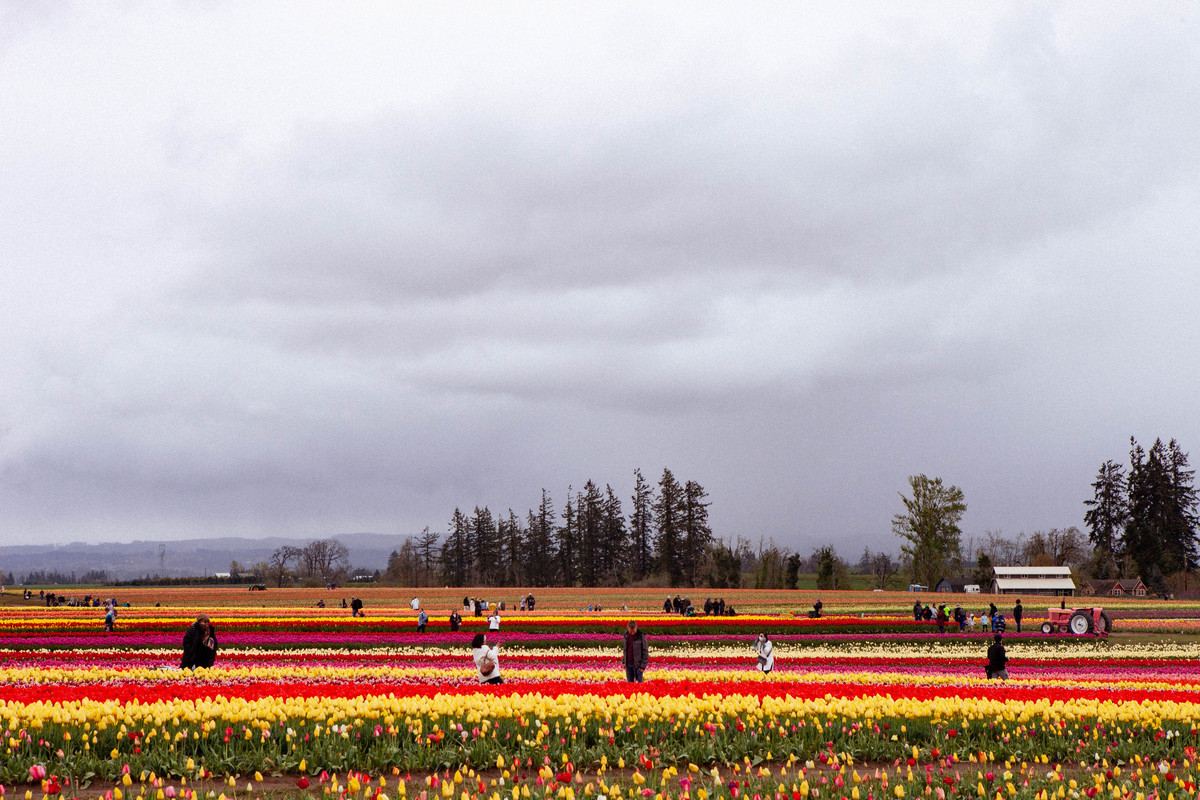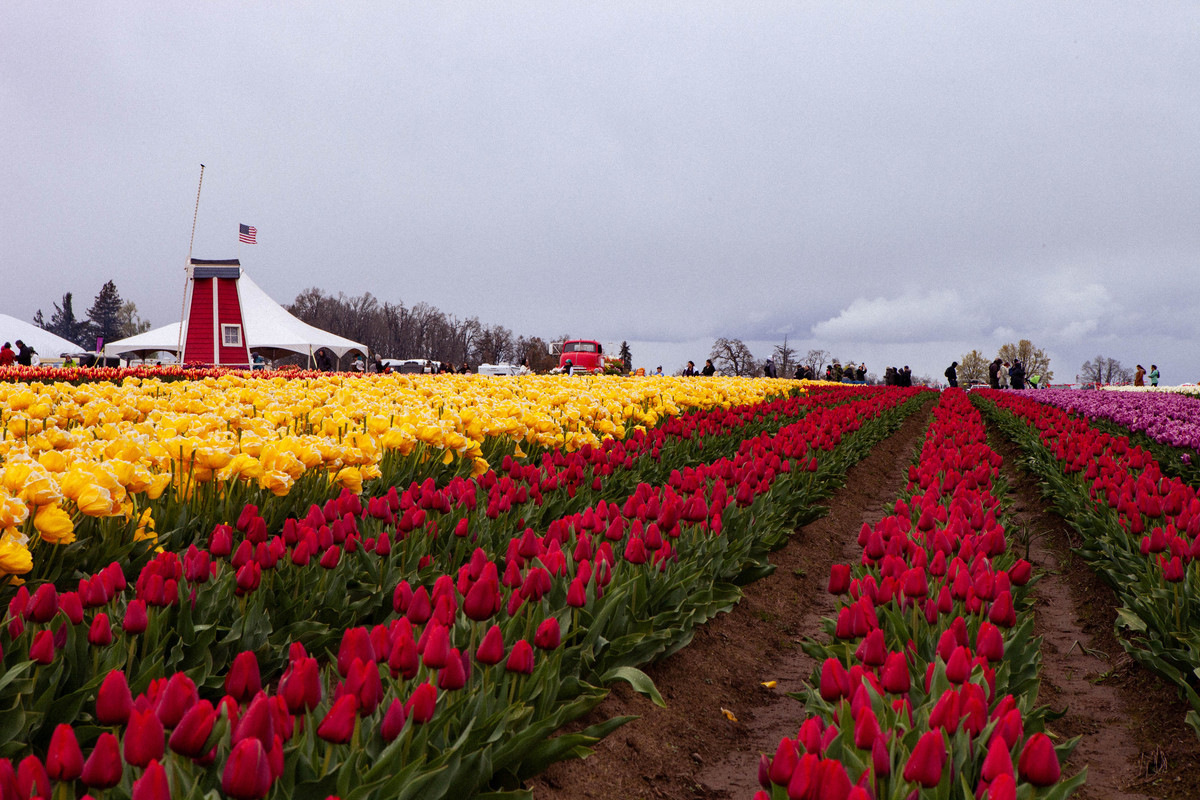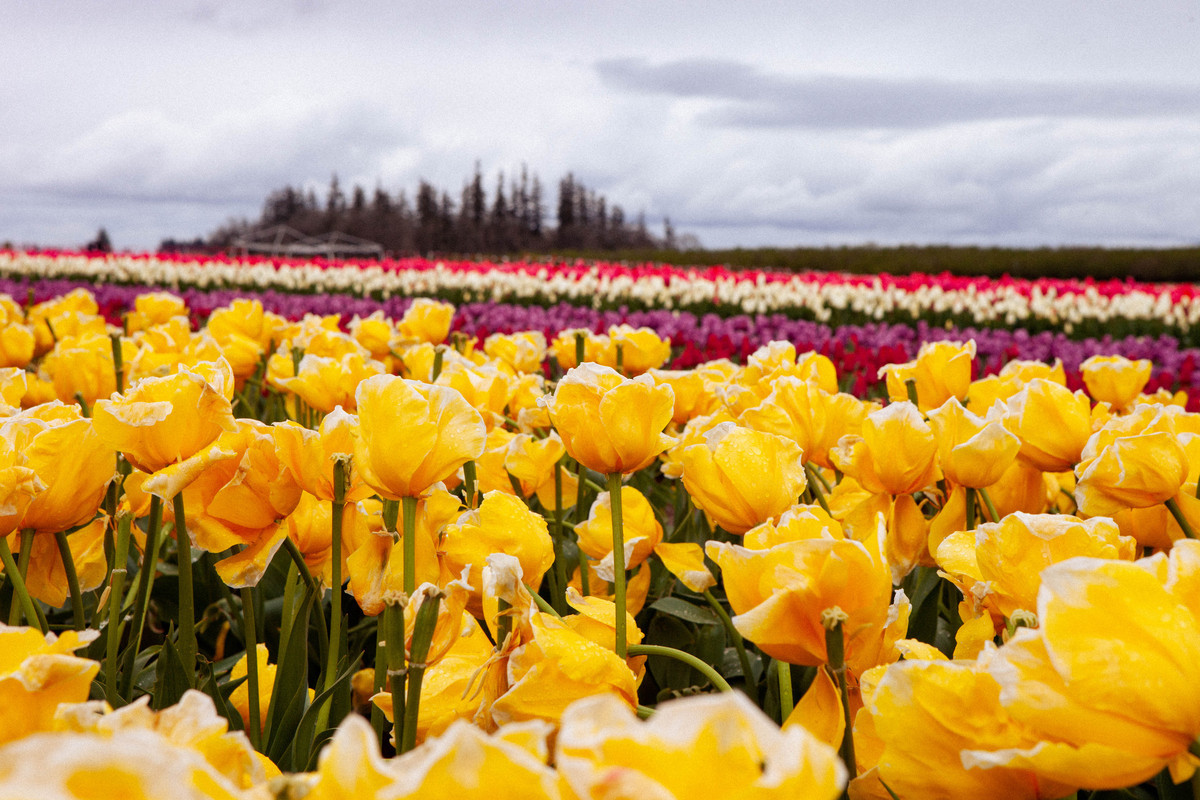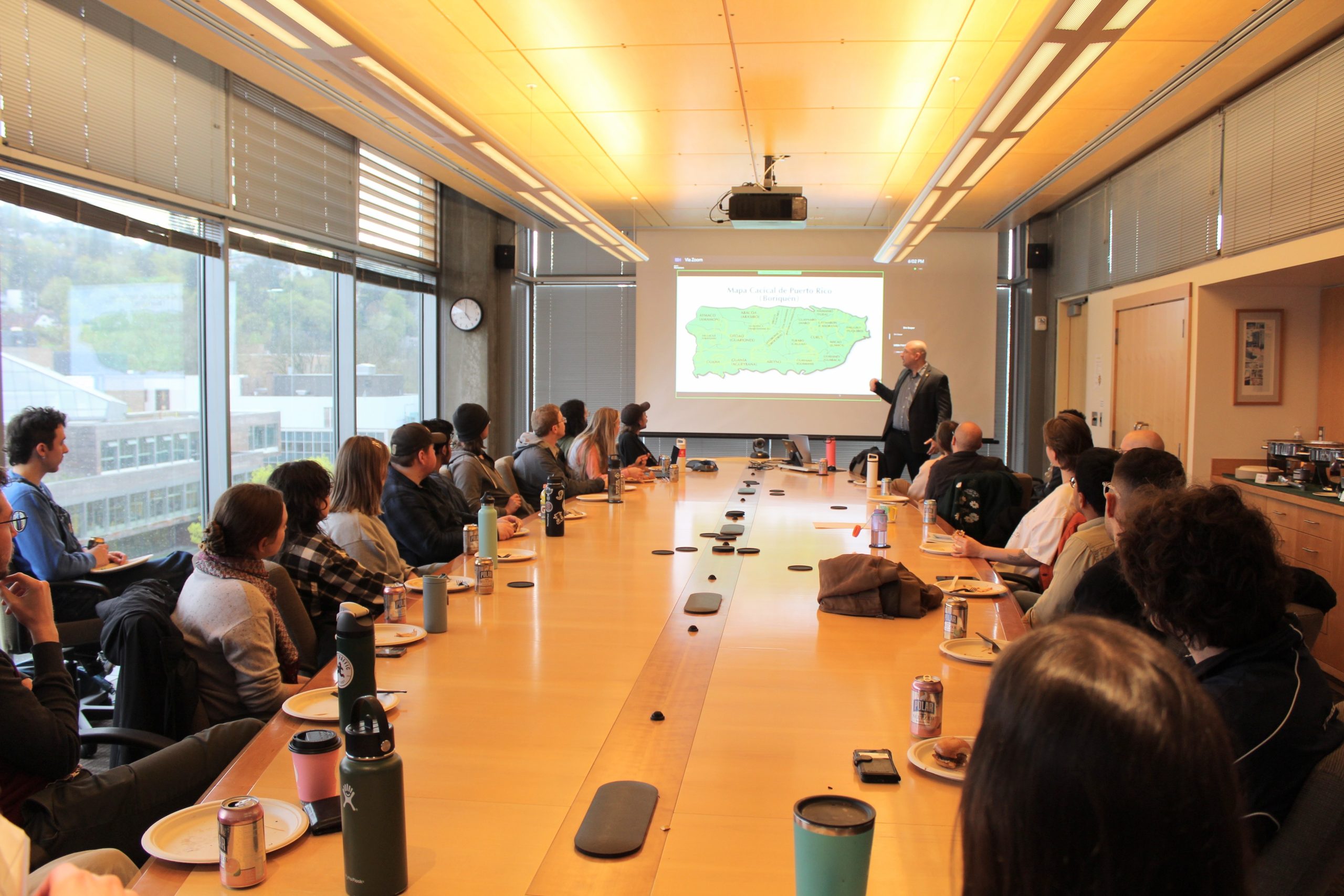For the past 38 years, a family-owned farm outside Woodburn, Oregon has been hosting one of the region’s most colorful springtime events—the Wooden Shoe Tulip Festival.
As the weather warms and buds turn to blossoms, the fields around Wooden Shoe Tulip Farm turn from earthy greens and browns to bright reds, pinks, purples and yellows as the tulips burst with color. The event brings in visitors from across the country—and even across the world.
Despite its current status as a sightseeing event, the Wooden Shoe Tulip Festival started small. The Iverson family, which owns and runs the farm, first opened the blooming fields in 1985 at the suggestion of their next-door neighbors. At the time, they didn’t see the appeal of touring a tulip farm—from their perspective, the fields of flowers were simply an agricultural operation.
“We had some neighbors who said ‘you know, you need to open the fields and and invite people out,’” said Barbara Iverson, one of the family members who owns the farm. “We were just farmers, we just looked at it as another crop.”
Nevertheless, the Iversons heeded their neighbor’s advice and organized an event aimed at home gardeners and flower-growing enthusiasts. To the Iversons’ delight, the showing was enough of a success to warrant another run the following year.
For the Iversons, letting customers visit the fields in bloom actually helped them appreciate the beauty in their own backyard.
“We just took it for granted that people would actually want to come and see what we do,” Iverson said. “You feel really blessed, because there’s just so much beauty on the farm that we used to take for granted, but for a lot of people, they don’t get to see that every day.”
As time passed, people began to catch on, and the crowd of annual visitors expanded beyond the original customer base, who were mostly home farmers. The new visitors were photographers, tourists and sightseers, none of whom were interested in buying bulbs or cut flowers so much as seeing the live tulips in the field.
“People would come, and take pictures, and then they’d leave,” Iverson said. “And they wouldn’t buy cut flowers, they wouldn’t buy bulbs.”
For the Iversons, this created a problem: most of their visitors came in order to see live tulips, but in order to keep the fields running, they had to harvest flowers for resale in other locations across the state.
“There was this demand back and forth between ‘I need colors for the people to see, but I need to cut because that’s how we sustain the farms.’”
To solve the problem, the Iversons turned the Festival into what it is today. They charge a gate fee to cover the cost of not cutting certain fields, then they use the proceeds to leave the flowers unharvested. This allows the fields to be filled with tulips throughout the entire season, instead of simply cutting them once they reach peak bloom.
Since that shift toward being a viewing event rather than a sales-based one, the festival has grown. Today, the event brings in people from across the state—and the world.
“We have a United States map and world map out [for people to mark their locations],” Iverson said. “It takes us about a week to get all 50 states…and then, on the world map, we have about 140 countries.”
For the Iversons, the chance to talk to different people from all over the world is part of what makes the work meaningful.
“I enjoy that because I get to meet people,” Iverson said. “I get to talk to people…I really enjoy that, because you can touch so many people…Our goal with this whole thing is to try to make people’s days a little bit easier, a little bit nicer.”














This is not in Southern Oregon, and you should probably mention to readers where the farm is actually located. Outside of Woodburn, OR.
Thanks for bringing this to our attention, Jon. We’ve made the correction.